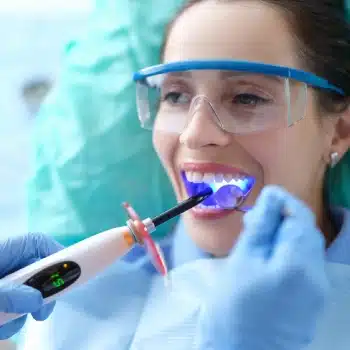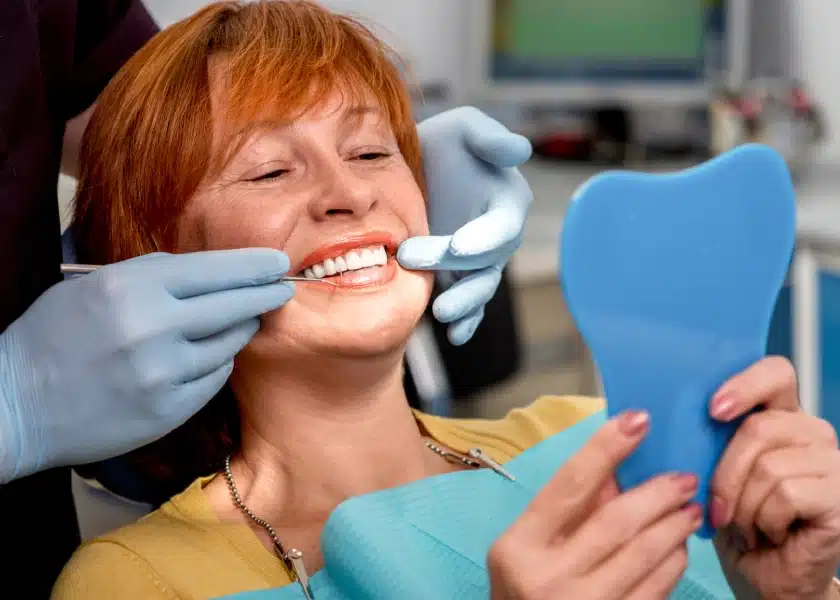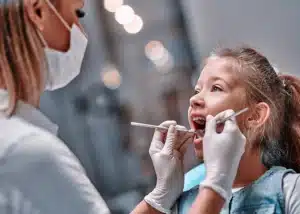Straightening your teeth not only enhances your smile but also improves oral health. Misaligned jaws and teeth can lead to cavities, gum inflammation, and even migraines. While braces effectively correct these issues, alternative options exist. From invisible aligners to cosmetic dentistry, various methods can straighten teeth without braces.
In this guide, let us look at some of the techniques that offer discreet and effective solutions for achieving a straighter smile. Whether seeking cosmetic enhancement or functional improvement, exploring these alternatives can lead to a healthier mouth and increased confidence in your smile.
The Importance of Straightening Crooked Teeth
Having crooked teeth can impact more than just your appearance—it can affect your confidence and oral health.
Crooked teeth may lead to various health issues, including:
- Poor oral hygiene may result in cavities and gum disease.
- Difficulty chewing food properly.
- Speech impediments.
- Abnormal wear and tear on tooth enamel.
- Jaw problems.
Traditionally, braces were the go-to solution for straightening teeth, but advancements in dentistry offer alternative options to achieve the smile you desire.
5 Ways to Straighten Your Teeth Without Braces
Keep reading to learn more about how to straighten teeth without braces and what options could be right for you.
Clear Aligners
Clear aligners are custom-made from high-quality polymers based on models of an individual’s teeth and a 3D plan of an ideal smile. You wear trays for most of the day and night, swapping them every few weeks as you progress toward straighter teeth.
Research shows that aligners are linked to better oral health compared to braces. You can remove it for brushing and flossing, unlike braces. Aligners are discreet, so few people will notice you’re undergoing treatment.
However, aligners require commitment. You must wear them consistently for effective results. They address dental issues from mild to significant, but patient compliance is crucial. If you neglect to wear your trays, they won’t be effective.

Retainers
Retainers serve as essential tools to maintain the results after extensive orthodontic treatment. However, adults can also use them to address minor smile issues without braces. Similar to aligners, retainers apply gentle pressure to the teeth to encourage alignment. Consistent daily wear can gradually straighten teeth, offering an alternative to braces.
Adults typically benefit more from this treatment option due to higher compliance rates. With various types of retainers available, individuals should select the one that best suits their dental needs and smile goals.
Veneers
Veneers are thin, shell-like pieces that dentists bond to the front of your teeth. They enhance your smile discreetly, and you don’t have to apply them to every tooth. Your dentist can match the veneer color to your existing teeth.
Some people choose braces when one or two teeth are twisted or uneven. Veneers offer a good solution, and dentists usually apply them in one visit.
Veneers are also a good option for people with teeth weakened by multiple fillings. A veneer covering can stabilize the tooth while improving its appearance.
But veneers can’t fix larger problems like significant gaps between teeth or jaw alignment issues. They’re not strong enough or designed to combat these issues. Veneers are also quite expensive ($250 to $2,500 per tooth), so a full-mouth restoration could be cost-prohibitive for some.
Dental Bonding
Dental Bonding resembles dental veneers closely. Dentists prepare a resin material that matches your tooth’s color and apply it to the surface of your chipped or flawed tooth. A UV light hardens the material in minutes.
Dental bonding addresses various issues, such as:
- Stains or discoloration
- Cracks or chips
- Gaps between teeth
- Exposed roots
Dental Bonding ranges from $100 to $1,000 per tooth, making it less suitable for full-mouth corrections. However, it can be an apt choice for minor issues.

Orthodontic Appliances
Orthodontic appliances go beyond traditional braces, offering various options for teeth correction. These include:
- Headgear: Utilizes hooks or bands connected to wires and frames around the head to address alignment issues, best suited for younger individuals with growing bones.
- Herbst appliance: Moves the lower jaw forward and the upper jaw back, attached to upper and lower molars, suitable for both adults and children.
- Mara appliance: Similar to the Herbst but slightly smaller in size.
While orthodontic appliances can effectively treat misaligned jaws, they may cause discomfort. Patients should discuss pain management with their doctor and seek adjustments if needed for better comfort.
Is it Possible to Naturally Straighten Teeth?
While some find dental devices uncomfortable, attempting DIY methods from the internet can be risky. Common DIY approaches include:
- Rubber bands
- Sticks
- Fingers
However, DIY methods pose risks:
- Infections: Home remedies can lead to deep infections.
- Cracking: Enamel damage is permanent.
- Pain: Pushing or pulling teeth can cause bleeding and discomfort.
- Toxin exposure: Improper materials can be harmful.
- Fractures: Excessive force can break teeth.
Natural tooth straightening isn’t safe or effective. It’s best to consult a professional for proper treatment.
Conclusion
Straightening teeth without braces offers a range of innovative options for achieving a confident smile. These methods provide effective solutions with minimal discomfort, from clear aligners to dental bonding. Embrace the opportunity to transform your smile and boost your confidence without the hassle of traditional braces.
Explore Your Options to Straighten Your Smile with Diamond Dental in Bellingham, WA
Ready to explore your options for straightening teeth without braces? Contact Diamond Dental in Bellingham, WA, today to schedule an appointment. New patients can call (360) 516-4610, while current patients can call (360) 734-1999.
FAQ
Many people can opt for alternatives like clear aligners or dental bonding, depending on their specific dental needs.
No, these methods are suitable for both adults and adolescents, provided they meet the criteria for treatment.
Results vary depending on the method chosen and individual dental conditions. However, many patients notice improvements within a few weeks to months.






